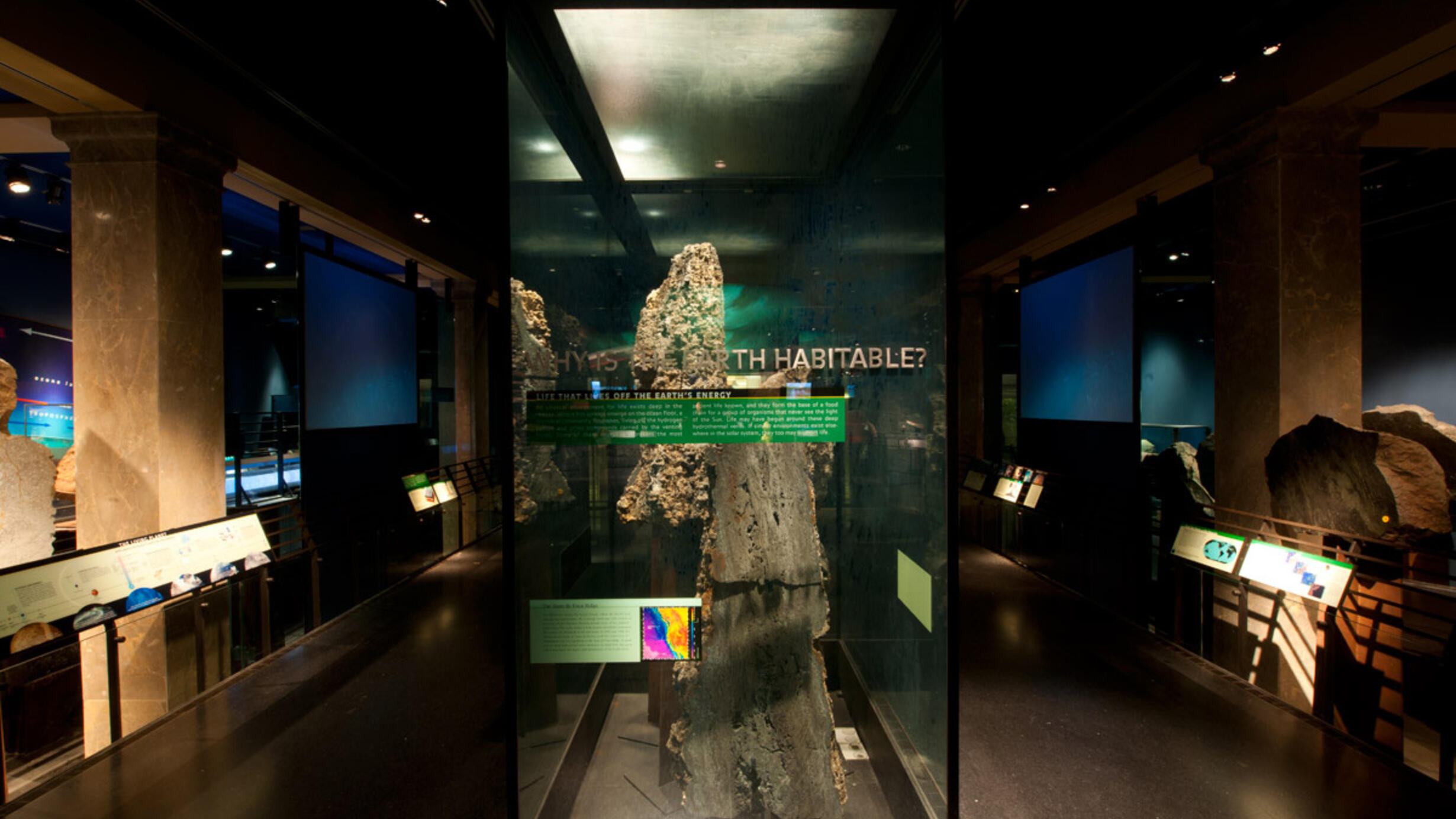Life that lives off the Earth's energy
Part of Hall of Planet Earth.

An unusual environment for life exists deep in the oceans. Where hot springs emerge on the ocean floor, a microbial community flourishes, living off the hydrogen sulfide and other compounds carried by the venting fluids. Some of these microbes represent the most ancient life known, and they form the base of a food chain for a group of organisms that never see the light of the Sun. Life may have begun around these deep hydrothermal vents. If similar environments exist elsewhere in the solar system, they too may support life.
Sulfide chimneys from the Juan de Fuca Ridge
At the Juan de Fuca Ridge and elsewhere along the global system of mid-ocean ridges, the heat from intrusions of magma, or molten rock, causes seawater to circulate through the cracks in the rocks. Sulfide chimneys build up around vents where the hot water returns to the ocean. The underwater hydrothermal systems influence chemical composition of the ocean, and the venting hot waters and structures that build up around the vents illustrate how certain ore deposits formed.
The Juan de Fuca Ridge
Two kilometers under the Pacific Ocean, where the Pacific and Juan de Fuca plates meet, lies a strange landscape with clusters of towering sulfide chimneys forming around vents of hot, mineraladen water. The rocks harbor a little-known microbial community that thrives on chemicals in the hot water. In 1997 and 1998, the American Museum of Natural History and the University of Washington sent an expedition to the Juan de Fuca Ridge. Its goals were to bring back several active chimneys, to study how they grow, and to determine the nature and distribution of life inside them.
Godzilla
The largest sulfide chimney ever found was from the Juan de Fuca Ridge. It stood 47 meters high and was named Godzilla by the scientists who discovered it. Godzilla collapsed into a heap of rubble in 1996, but by the next year, a second spire, about 20 meters high, had grown in its place. Great amounts of mineral-laden hot water must circulate in the crust for such massive structures to form. About 80 percent of the Earth’s internal heat escapes through the ocean ridge system.
The sulfide chimney displayed here were named for charaters in Irish mythology: the warrior Finn MacCool, Gwenen, Guinevere’s lusty sister, and Roane (Gaelic for “seal”), one of the fairy people.
AMNH collection
AMNH collection